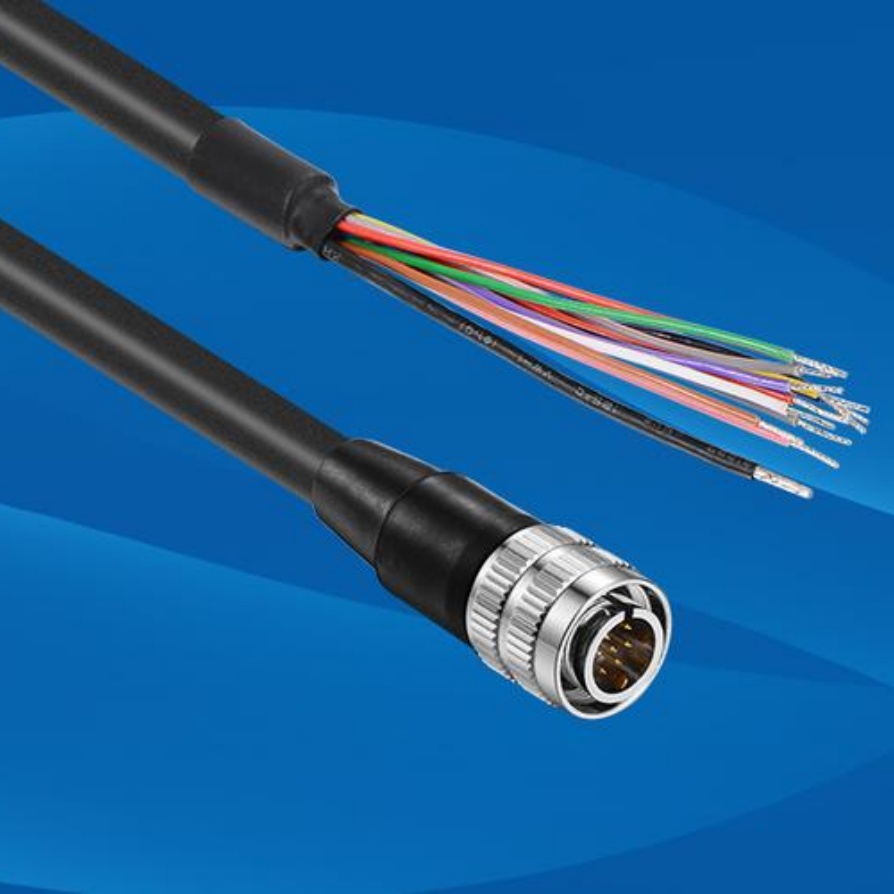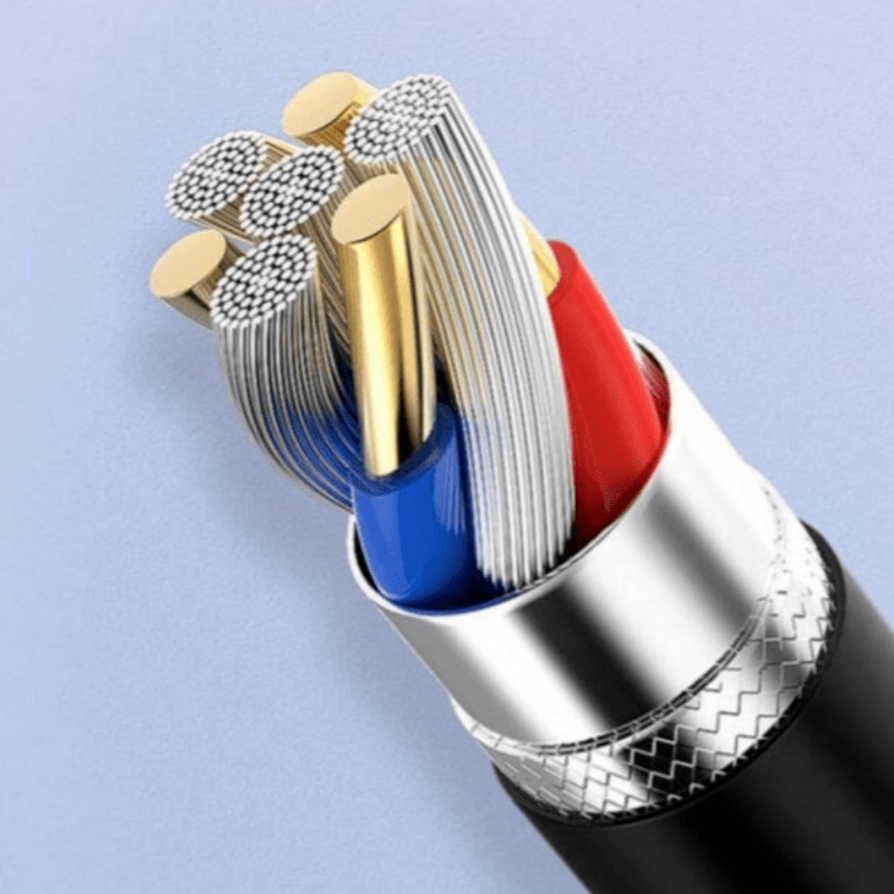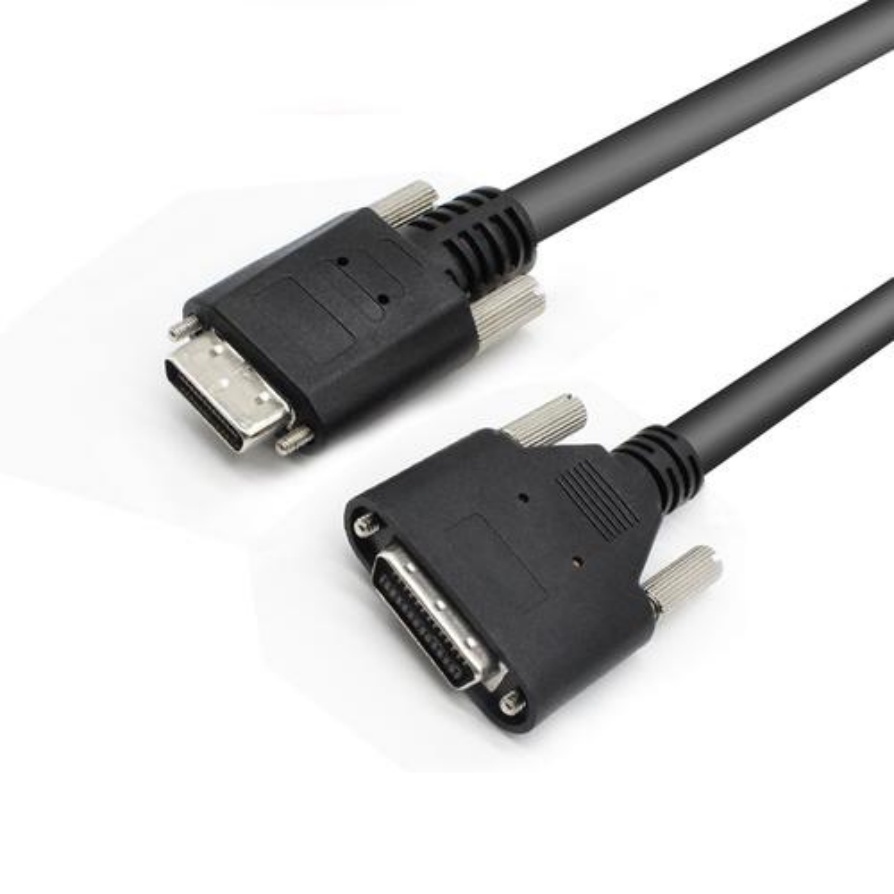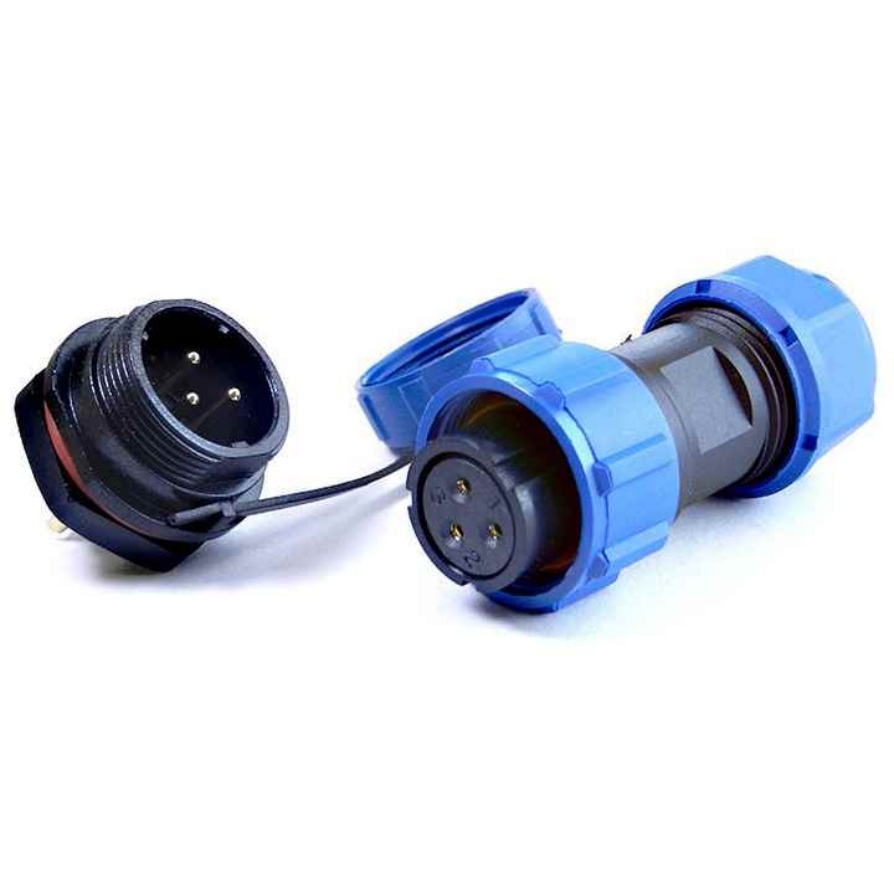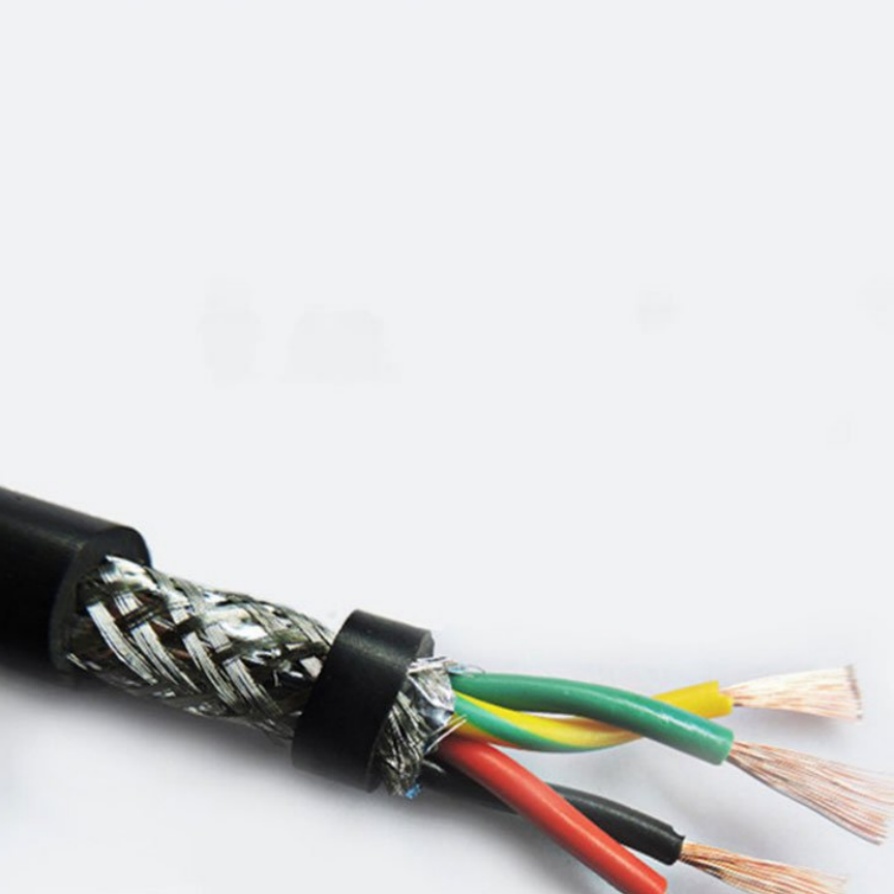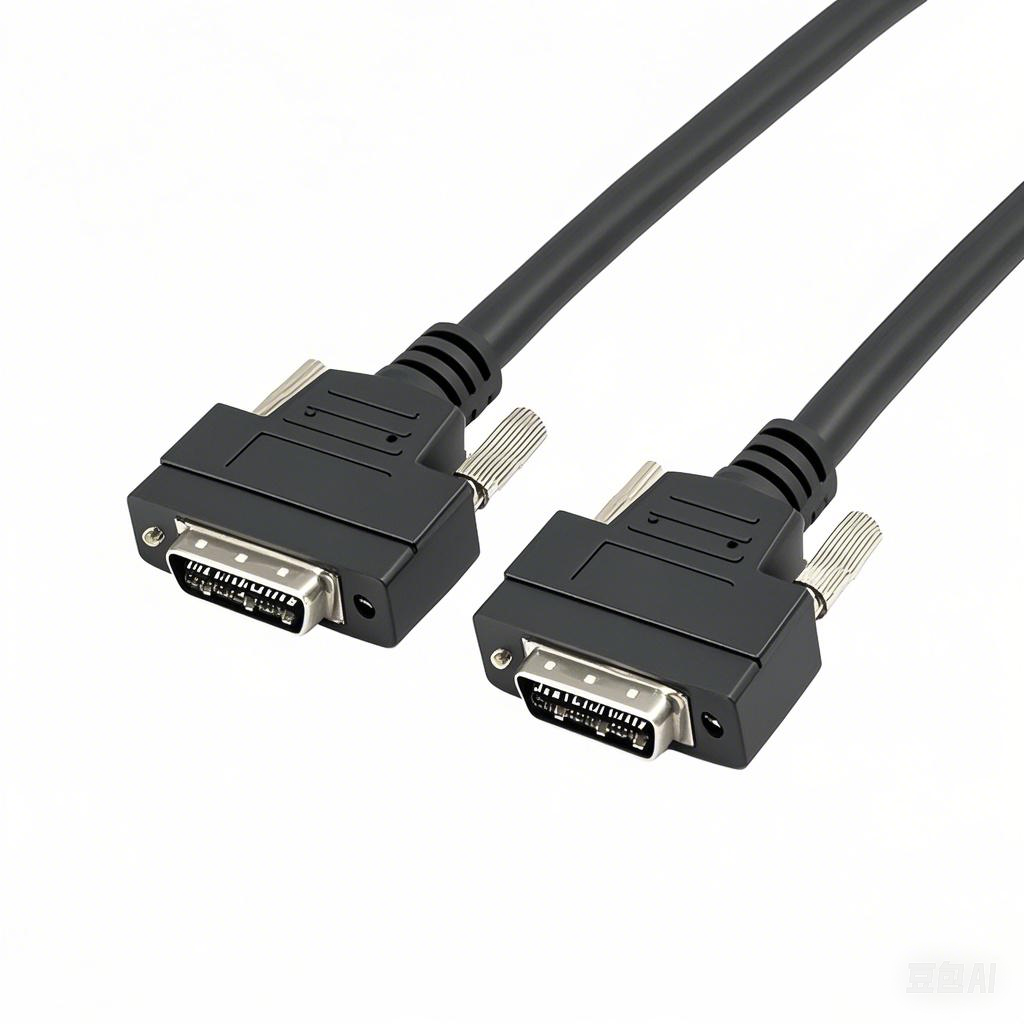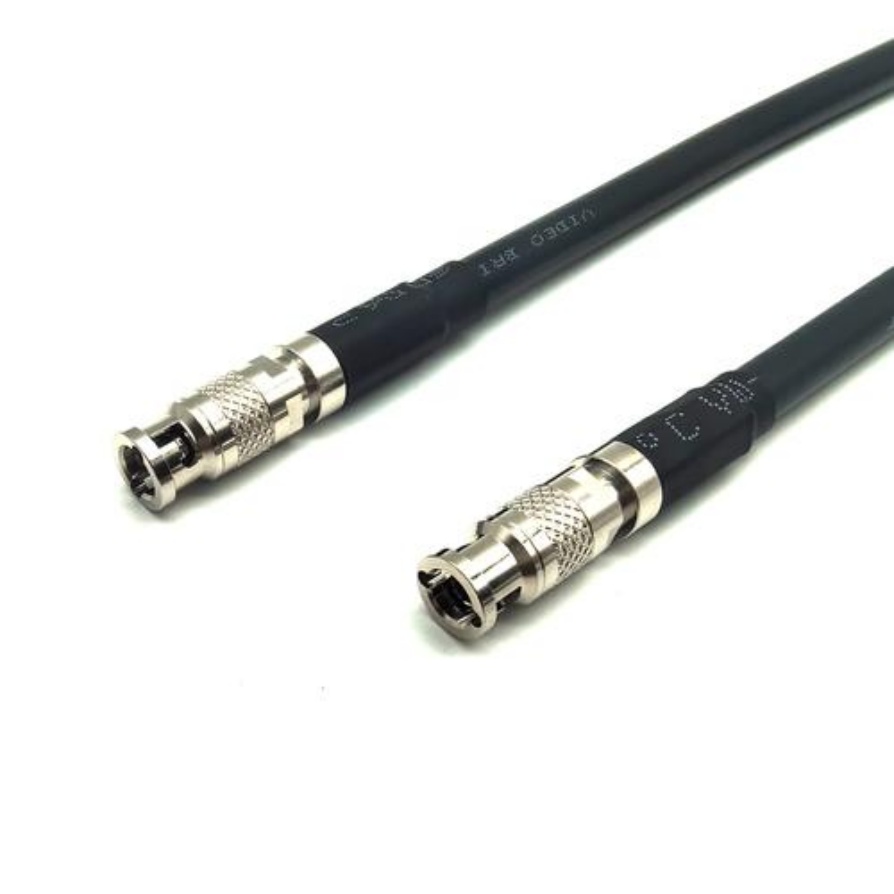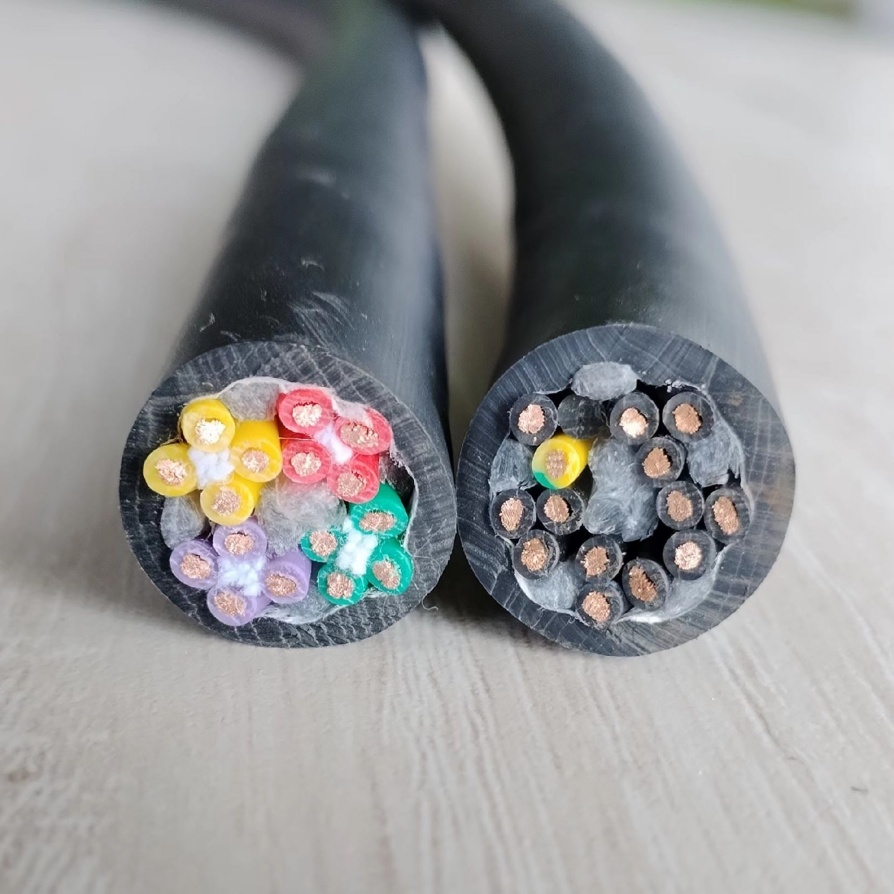What is the Effect of Temperature on Machine Cable Resistance? A Comp...
Machine cables are the unsung heroes of modern industrial operations. From automated manufacturing lines and heavy-duty machinery to power generation systems and transportation fleets, these cables serve as the critical lifeline for electrical current transmission, ensuring devices operate efficiently, safely, and consistently. However, their performance is not immune to environmental factors—and among these, temperature stands out as one of the most impactful variables, directly altering a cable’s electrical resistance. For engineers, maintenance teams, and procurement professionals searching for insights into “temperature on machine cable,” understanding how heat and cold affect resistance is not just a technical detail—it’s a key factor in minimizing downtime, reducing energy waste, and extending the lifespan of both cables and the equipment they power.
1. The Fundamentals: Resistance and Temperature Coefficient in Machine Cable Conductors
Before diving into temperature’s effects, it’s essential to establish the basics of electrical resistance in machine cables. Resistance (measured in ohms, Ω) is the opposition a material offers to the flow of electric current. For machine cables—typically made of copper or aluminum conductors, wrapped in insulating materials like PVC, XLPE, or fluoropolymers—resistance is determined by three core factors: conductor material, conductor length, and conductor cross-sectional area. But temperature adds a fourth, dynamic variable: the temperature coefficient of resistance (TCR).
The TCR quantifies how much a material’s resistance changes per degree of temperature variation. Most metals used in machine cables (e.g., copper, aluminum) have a positive TCR, meaning their resistance increases as temperature rises and decreases as temperature falls. This is because higher temperatures cause metal atoms to vibrate more vigorously, creating greater friction for moving electrons (the carriers of electric current). Conversely, lower temperatures reduce atomic vibration, lowering electron resistance.
To put this into practical terms, consider the industry-standard formula for calculating resistance at a given temperature:
Rt = R0 [1 + α0 (Tt – T0)]
- Rt = Resistance at the target temperature (Tt)
- R0 = Resistance at the reference temperature (typically 20°C or 25°C)
- α0 = TCR at the reference temperature
- Tt – T0 = Difference between the target temperature and reference temperature
For machine cables, copper is the most common conductor material due to its low resistivity and stable TCR. At 20°C, copper has a resistivity of ~1.72×10⁻⁸ Ω·m and a TCR (α0) of ~0.00393/°C. Aluminum, a more cost-effective alternative, has a higher resistivity (~2.82×10⁻⁸ Ω·m) and a higher TCR (~0.00429/°C)—meaning its resistance is more sensitive to temperature changes than copper. This distinction is critical for “temperature on machine cable” applications: a copper cable will maintain more stable resistance across temperature fluctuations than an aluminum one, making it preferable for high-precision or high-temperature industrial settings.
2. How High Temperature Impacts Machine Cable Resistance and Performance
High temperatures are a common challenge for machine cables, especially in industries like automotive manufacturing (near engines or welding equipment), metal processing (near furnaces), or power generation (around turbines). Even in less extreme environments, prolonged operation can cause cables to heat up due to I²R losses (power dissipated as heat when current flows through a resistor)—a phenomenon that creates a dangerous feedback loop: higher temperature → higher resistance → more I²R losses → even higher temperature.
Key Consequences of High Temperature on Machine Cable Resistance:
- Reduced Current-Carrying Capacity: As resistance increases, the cable can safely carry less current without overheating. For example, a 10AWG copper machine cable rated for 30A at 25°C may only handle 22A at 75°C—a 27% reduction. This forces equipment to operate below its rated capacity, lowering productivity.
- Insulation Degradation: High resistance-generated heat doesn’t just affect conductors—it damages insulating materials. PVC, a common insulator for low-temperature applications, begins to soften at 70°C and decomposes above 100°C, releasing toxic fumes and losing its ability to prevent short circuits. Even more durable materials like XLPE (cross-linked polyethylene) can degrade over time at temperatures above 90°C, leading to insulation breakdown and catastrophic equipment failure.
- Shortened Cable Lifespan: A study by the International Electrotechnical Commission (IEC) found that for every 10°C increase in operating temperature beyond a cable’s rated limit, its lifespan is halved. A machine cable designed for 80°C operation, if consistently exposed to 90°C, will last only half as long—adding unplanned replacement costs and downtime.
- Voltage Drops and Energy Waste: Higher resistance causes greater voltage drops along the cable length. For industrial machines requiring precise voltage (e.g., CNC routers, robotic arms), this can lead to erratic performance, product defects, or even equipment shutdowns. Additionally, the energy lost as heat (I²R losses) wastes electricity—for a factory with hundreds of machine cables, this can translate to thousands of dollars in unnecessary utility costs annually.
A real-world example illustrates this risk: a automotive parts manufacturer in Ohio experienced frequent downtime in its welding robots due to overheating cables. An inspection revealed that the robots’ cables, rated for 75°C, were operating at 92°C near the welding torches. The increased resistance caused voltage drops, forcing the robots to shut down to prevent damage. Replacing the cables with high-temperature-rated alternatives resolved the issue—highlighting why “temperature on machine cable” is a critical consideration for operational reliability.
3. The Effects of Low Temperature on Machine Cable Resistance and Durability
While high temperatures are more commonly discussed, low temperatures also pose significant challenges for machine cables—especially in outdoor applications (e.g., construction equipment in cold climates, offshore wind turbines) or refrigerated facilities (e.g., food processing plants). Unlike high temperatures, low temperatures decrease conductor resistance, but this benefit is far outweighed by the damage cold can inflict on cable materials and structure.
Key Consequences of Low Temperature on Machine Cable Resistance:
- Insulation Brittleness: Most insulating materials become rigid and brittle at low temperatures. PVC, for instance, loses flexibility below 0°C, while XLPE can crack at -20°C. When a brittle cable is bent, moved, or vibrated (common in machinery), its insulation can split—exposing the conductor and creating short-circuit risks. Even if resistance is low, a damaged cable cannot safely transmit current.
- Conductor Fatigue: While copper and aluminum conductors remain conductive at low temperatures, repeated thermal cycling (e.g., a cable exposed to -30°C overnight and 20°C during the workday) can cause metal fatigue. Over time, this leads to microcracks in the conductor, which increase resistance locally. These “hot spots” can eventually lead to conductor failure, even if the rest of the cable appears intact.
- Reduced Flexibility and Installation Issues: Cold temperatures make machine cables stiff, making them difficult to install or route around machinery. For example, a cable designed for flexible use in robotics may become too rigid to bend at -15°C, forcing installers to use excessive force—which damages the insulation or conductor. This not only delays installation but also compromises long-term performance.
- Moisture Intrusion: In cold, humid environments, moisture can seep into small cracks in brittle insulation and freeze. Frozen moisture expands, widening cracks and further damaging the cable. This not only increases resistance but also introduces corrosion risks for copper conductors—accelerating cable degradation.
For example, a construction company in Minnesota struggled with frequent cable failures in its excavators during winter. The excavators’ standard PVC-insulated cables became brittle at -25°C, cracking when the machines’ arms moved. The reduced insulation integrity led to short circuits, even though the conductors’ resistance was lower. Switching to a low-temperature-rated cable with a thermoplastic elastomer (TPE) insulation—designed to remain flexible at -40°C—eliminated the issue, demonstrating how addressing “temperature on machine cable” in cold conditions is just as critical as in hot environments.
4. Mitigating Temperature-Related Risks: Best Practices for Machine Cable Selection
To minimize the impact of temperature on machine cable resistance, selecting the right cable for the application is essential. Here are key factors to consider—tailored to address the challenges of both high and low temperatures:
a. Choose the Right Conductor Material
- Copper: Ideal for most industrial applications, especially those with temperature fluctuations. Its low resistivity and moderate TCR ensure stable resistance across a wide temperature range (-40°C to 100°C for standard cables). For high-temperature applications (e.g., near furnaces), tinned copper offers additional corrosion resistance and can withstand temperatures up to 150°C.
- Aluminum: A cost-effective alternative for low-current, low-temperature applications (e.g., non-critical machinery in mild climates). However, its higher TCR and lower conductivity make it unsuitable for high-temperature or high-precision applications.
b. Select Temperature-Rated Insulation
Insulation material is the first line of defense against temperature damage. When evaluating “temperature on machine cable” options, look for insulation rated for your application’s temperature range:
- High-Temperature Insulation: Fluoropolymers (e.g., PTFE, FEP) are ideal for extreme heat, with temperature ratings up to 260°C. They resist degradation, chemical exposure, and I²R-generated heat. XLPE is a more affordable option for moderate high temperatures (up to 125°C) and offers excellent electrical insulation.
- Low-Temperature Insulation: Thermoplastic elastomers (TPE) or polyurethane (PU) insulations remain flexible at temperatures as low as -40°C. They resist brittleness and cracking, making them suitable for cold climates or refrigerated environments.
c. Opt for the Right Cable Design
- Cross-Sectional Area: A larger conductor cross-section reduces resistance (per Ohm’s law), minimizing I²R losses and heat generation. For high-temperature applications, upsizing the cable (e.g., using 8AWG instead of 10AWG) can help maintain current-carrying capacity.
- Stranded Conductors: Stranded conductors (made of multiple small wires) are more flexible than solid conductors, making them less prone to fatigue in low temperatures or applications with vibration. They also dissipate heat more evenly than solid conductors, reducing hot spots.
- Armoring: For outdoor or harsh environments, armored cables (e.g., steel or aluminum armor) provide additional protection against physical damage and temperature extremes. Armor helps shield the conductor and insulation from direct heat or cold, stabilizing resistance.
d. Implement Proper Installation and Maintenance
- Avoid Heat Sources: Route cables away from engines, furnaces, or other heat-generating equipment. If proximity is unavoidable, use heat shields or conduit to reduce direct heat exposure.
- Prevent Moisture Intrusion: In low-temperature environments, seal cable joints and terminations to prevent moisture from entering and freezing. Use waterproof connectors and insulation wraps.
- Regular Testing: Periodically measure cable resistance using a multimeter or insulation resistance tester. A sudden increase in resistance may indicate conductor damage or insulation degradation—allowing for proactive replacement before failure.
5. Industry-Specific Applications: Tailoring Machine Cables to Temperature Environments
The impact of temperature on machine cable resistance varies by industry, as each sector faces unique temperature challenges. Below are examples of how “temperature on machine cable” considerations shape cable selection across key industries:
a. Automotive Manufacturing
Automotive plants use machine cables in welding robots, assembly lines, and paint booths. Welding robots generate extreme localized heat (up to 150°C), requiring cables with fluoropolymer insulation and tinned copper conductors to resist heat and spatter. Paint booths, by contrast, operate at moderate temperatures (20–30°C) but require chemical-resistant insulation—highlighting that temperature is just one factor, but a critical one.
b. Food Processing
Food processing facilities often have refrigerated zones (-10°C to 0°C) for meat or dairy storage, as well as high-temperature zones (80–100°C) for cooking or sterilization. Cables in refrigerated areas need TPE insulation to remain flexible, while those in high-temperature zones require XLPE or fluoropolymer insulation. Additionally, cables must be resistant to water and cleaning chemicals—combining temperature resilience with durability.
c. Renewable Energy
Offshore wind turbines face extreme cold (down to -20°C) and saltwater exposure, while solar inverters generate heat (up to 90°C) during operation. Wind turbine cables use low-temperature TPE insulation and armored jackets to withstand cold and corrosion, while solar inverter cables use XLPE insulation to handle heat and UV exposure. Both require stable resistance to ensure consistent energy transmission.
d. Heavy Machinery
Construction and mining equipment operate in diverse climates—from desert heat (40–50°C) to arctic cold (-30°C). Cables for this equipment must be rugged, with high-temperature-resistant insulation (for deserts) or low-temperature flexible insulation (for cold regions). They also need to withstand vibration and physical impact, making stranded conductors and armor essential.
6. FRS: Your Trusted Partner for High-Performance Machine Cables Resistant to Temperature Fluctuations
When it comes to addressing “temperature on machine cable” challenges, FRS stands out as a leading manufacturer of industrial-grade machine cables designed for reliability, durability, and performance across extreme temperatures. For over a decade, FRS has specialized in engineering cables that mitigate the effects of heat and cold on resistance—helping businesses reduce downtime, cut energy costs, and extend equipment life.
At FRS, we don’t just produce cables—we create tailored solutions for your unique temperature environment. Our machine cables feature:
- Premium Conductors: We use high-purity copper (99.99% pure) for low resistivity and stable TCR, ensuring consistent resistance across -40°C to 150°C. For cost-sensitive applications, our aluminum conductors are engineered with corrosion-resistant coatings to maintain performance.
- Temperature-optimized Insulation: Our product line includes cables with PVC (for mild temperatures), XLPE (for moderate heat), fluoropolymers (for extreme heat up to 260°C), and TPE (for cold down to -40°C). Each insulation material is rigorously tested to ensure it resists brittleness, degradation, and moisture.
- Custom Design Capabilities: Whether you need a flexible cable for a robotic arm in a cold warehouse or a high-temperature cable for a furnace-side sensor, FRS works with you to design cables that meet your exact temperature, current, and installation requirements. Our engineering team uses advanced simulation tools to predict resistance changes across temperature ranges, ensuring your cables perform as expected.
- Strict Quality Control: Every FRS machine cable undergoes comprehensive testing—including resistance measurement at multiple temperatures, insulation integrity checks, and flexibility testing in extreme cold or heat. We adhere to international standards (IEC, UL, CSA) to ensure safety and reliability.
For businesses struggling with temperature-related cable failures, energy waste, or inconsistent equipment performance, FRS is your solution. Our cables are trusted by manufacturers, renewable energy providers, and construction companies worldwide—proven to maintain stable resistance, reduce downtime, and lower long-term costs. When you choose FRS, you’re not just buying a cable—you’re investing in peace of mind, knowing your machine cables are built to withstand the temperature challenges of your industry.
Contact FRS today to learn how our temperature-optimized machine cables can solve your “temperature on machine cable” needs—and keep your operations running smoothly, no matter the climate.编辑分享
在文章中加入一些实际案例
写一篇关于温度对机器电缆电阻影响的中文文章
以FRS品牌工厂的角度推荐一些提高机器电缆性能的方法



